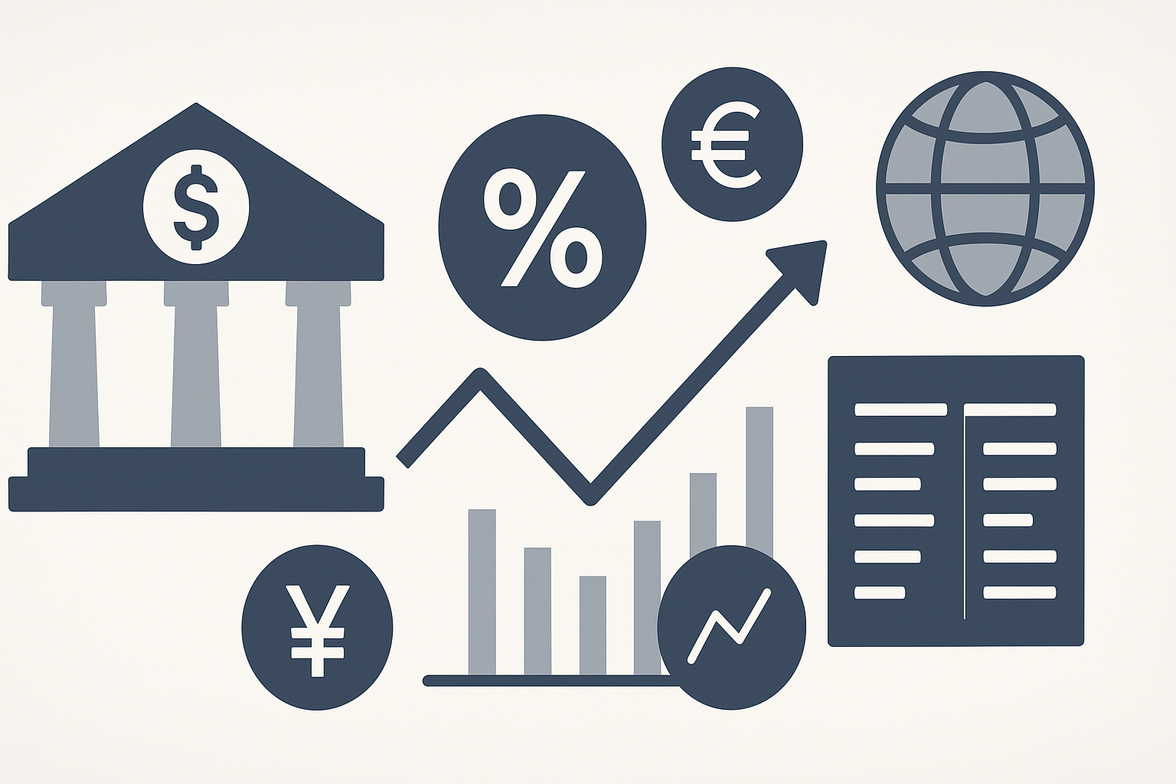
Introduction to Financial Market Structure
Financial market structure forms the backbone of the global economy, guiding how capital moves from savers to users, prices are discovered, and risk is distributed. Financial markets consist of institutional frameworks where individuals, corporations, governments, and intermediaries interact to exchange capital. These systems facilitate resource allocation through the issuance and trading of financial instruments such as equities, bonds, derivatives, and currencies. Modern markets span diverse geographies and regulatory contexts, providing the platform for price discovery, liquidity, and risk mitigation. Efficient structure is central to economic growth and monetary stability. Understanding financial market structure elucidates the mechanisms underlying risk, return, and market behavior.
Primary and Secondary Markets: Structures and Functions
The financial market structure divides into primary and secondary layers. The primary market is where governments or corporations issue new securities to raise capital, often via initial public offerings (IPOs), government bonds, or private placements. Investment banks and underwriters help structure and price these offers, aligning issuer needs with investor appetite. Once securities are issued, they enter the secondary market, where they are traded among investors. Secondary markets, like stock exchanges (e.g., NYSE, LSE) and over-the-counter (OTC) platforms, deliver liquidity, facilitate price discovery, and enable portfolio rebalancing. The structure and depth of secondary markets directly influence cost of capital and investment horizons. For more background on market types, see [Investopedia’s overview](https://www.investopedia.com/terms/f/financial-market.asp).
Types of Financial Instruments within Market Structure
Financial market structure encompasses a vast array of instruments:
- Equities: Represent ownership in companies, conveying dividend rights and governance through voting.
- Bonds: Fixed-income claims, including government and corporate issues, that provide periodic interest payments and principal redemption at maturity.
- Derivatives: Financial contracts such as options, futures, and swaps derive value from underlying assets, indexes, or rates, supporting hedging and speculation.
- Money Market Instruments: These short-term debt instruments, like treasury bills and certificates of deposit, offer liquidity and relatively stable returns.
- Foreign Exchange: The FX market underpins international trade and investment by enabling currency conversion and speculation.
The interplay among these instruments broadens the risk-return spectrum and highlights the technical complexity embedded in financial market structure.
Key Participants in Financial Market Structure
Financial market structure thrives on the actions and incentives of diverse participants:
- Institutional Investors: Pension funds, mutual funds, sovereign wealth funds, and insurance companies wield significant capital and confer liquidity and stability.
- Retail Investors: Individual participants either direct or via intermediaries diversify and personalize investment behavior.
- Corporations and Issuers: Raise or allocate capital, influence market supply, and manage financial strategy.
- Market Makers and Brokers: Facilitate transactions by quoting prices and matching orders, thus supporting liquidity and minimizing spreads.
- Hedge Funds: Employ flexible and leveraged strategies to seek absolute returns or arbitrage inefficiencies.
- Central Banks and Regulators: Set monetary policy, supervise conduct, and enforce market rules to protect systemic stability.
Each agent’s strategy and regulatory interaction shapes price movement, depth, and market innovation.
Market Infrastructure and Technology Evolution
Technological progress has transformed core market infrastructure. Electronic trading platforms and automated matching engines have replaced manual open outcry systems, producing faster and more reliable order execution. Clearinghouses reduce counterparty credit risk by stepping between buyers and sellers, ensuring trades settle even if a party defaults. Central Securities Depositories (CSDs) like Euroclear and DTCC maintain records, manage security issuance, and ensure seamless transfer of ownership. Market data vendors aggregate and disseminate real-time prices, transactional data, and analytics.
Further, innovations in algorithmic and high-frequency trading (HFT) have increased market efficiency while raising debate over volatility and fairness. Artificial intelligence now powers trade execution, risk profiling, and fraud detection. Meanwhile, cybersecurity and operational resilience are paramount, given the threat landscape and market scale. For current trends in market technology, see [World Economic Forum’s analysis](https://www.weforum.org/agenda/2023/01/fintech-trends/).
Regulatory Frameworks and Oversight within Market Structure
Robust regulatory oversight is foundational to financial market structure. Regulators like the U.S. SEC, UK FCA, and EU ESMA establish and enforce rules governing disclosure, capital adequacy, and fair conduct. Regulations aim to prevent fraud, market abuse, and systemic instability. Key frameworks include:
- Sarbanes-Oxley Act (US): Mandates corporate transparency and internal controls.
- Markets in Financial Instruments Directive (MiFID II, EU): Enhances investor protection and transparency across European markets.
- Basel Accords (global): Set capital and risk management standards for banks worldwide.
Cross-border financial activity requires international regulatory coordination. Compliance systems, detailed reporting, and continuous audit activities uphold systemic trust and confidence. For more on regulation, refer to the [Wikipedia entry on Financial Regulation](https://en.wikipedia.org/wiki/Financial_regulation).
Market Dynamics and Systemic Risk: The Role of Structure
Financial market structure shapes how shocks, trends, and cycles propagate. Price volatility, influenced by macroeconomic data, corporate fundamentals, and geopolitical events, is absorbed or amplified by structural factors including market depth, connectivity, and trading mechanisms. Systemic risk arises from leverage, interconnectedness, and behavioral feedback loops, such as margin calls cascading across institutions or algorithmic patterns amplifying swings.
The 2007–2008 financial crisis exemplified how structural weaknesses—opaque derivatives, poor risk controls, and inadequate oversight—contributed to global systemic instability. In response, reforms like Dodd-Frank were introduced, mandating stricter oversight, enhanced disclosure, and new capital requirements. Mechanisms such as circuit breakers and collateral mandates aim to contain market disruptions. Understanding structural determinants of risk transmission is vital for anticipating vulnerabilities and supporting orderly markets.
Comparative Context and Historical Evolution
Financial market structure has evolved through significant historical milestones. Traditional markets operated via physical exchanges and personal relationships; today’s structures are global, digital, and continuously linked. Key transitions include the dematerialization of securities, expansion of OTC products, and the proliferation of decentralized finance (DeFi) platforms. Each phase brought new efficiencies—and new regulatory, operational, and systemic risks. Studying historical changes clarifies the trajectory and challenges of contemporary financial system design.
Global Interconnectedness and the Future of Market Structure
Modern financial market structure is deeply interconnected. Cross-border flows, multinational issuers, and globally active investors make systemic risk both more prevalent and harder to contain. Innovations such as blockchain challenge traditional intermediaries and create both opportunities and new regulatory dilemmas. The ongoing integration of environmental, social, and governance (ESG) factors into market architecture is reshaping priorities for issuers, investors, and rule makers alike.
International coordination, transparent infrastructure, and adaptive oversight will remain crucial as financial market structure evolves. Familiarity with these developments helps professionals interpret market events, assess emerging risks, and understand policy implications in a dynamically changing world.
Conclusion
A deep understanding of financial market structure reveals how markets facilitate capital flow, manage risk and enable innovation through a complex interplay of participants, instruments and regulation. As finance becomes more global and technologically driven, monitoring how these structures adapt remains essential for maintaining stability and integrity across markets.



